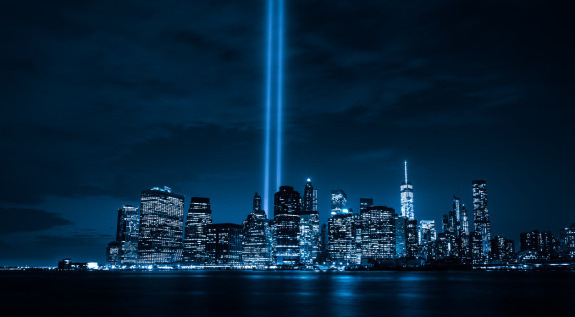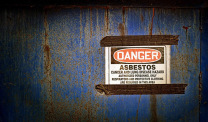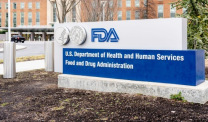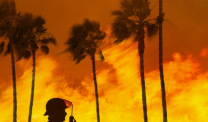Supporting Survivors of the 9/11 Attack and Ground Zero Exposure
Asbestos Exposure & BansWritten by Amy Edel | Edited By Walter Pacheco

As the nation remembers those lost 23 years ago on September 11, 2001, we also honor those diagnosed with serious health conditions as a result of the attacks. Exposure to toxins in the aftermath at Ground Zero in New York and the Pentagon in Washington, D.C. has affected thousands of people.
Last week Fire Commissioner Robert S. Tucker of the Fire Department of the City of New York added 32 names to the World Trade Center Memorial Wall. These FDNY firefighters lost their lives to 9/11-related illnesses.
The number of firefighters who lost their lives because of illnesses connected to asbestos and other carcinogens has now exceeded the number of those who died on 9/11. As Commissioner Tucker explained during the ceremony at department headquarters in Brooklyn, more than 360 FDNY firefighters have died from exposure-related illnesses. On the day of the attack, 343 FDNY members died.
“As we do every year, we will reflect on the 343 members who died that day, and we will be sobered in knowing that those insurmountable losses did not end at the World Trade Center site,” Tucker said. “Instead, we have seen our members become sick because of time they spent working in the rescue and recovery. …While there is great sadness here, there is also tremendous gratitude for time spent, for promises kept, and in knowing that each of these members would do it all again if asked. That’s the beauty of the FDNY.”
The New York Police Department remembered its 23 members who died in the line of duty on 9/11. They also honored the 377 NYPD members who have since died of exposure-related diseases. The Federal Bureau of Investigations has also added 27 names of those in NY and at the Pentagon who have died of health complications to the 2 names of those who died on 9/11 on its Wall of Honor.
Anyone in or near the Pentagon or within range of the plume of “WTC dust” in New York City is at risk of diagnoses such as cardiovascular disease, respiratory issues and cancers such as lung cancer and mesothelioma. Survivors are now facing this risk with annual medical screenings while many others are coping with a diagnosis.
Risks and Support for Pentagon Survivors
Military personnel, civilian staff members and the construction workers and other crew members involved in renovations at the Pentagon that were underway before the attack were exposed to a number of serious carcinogens. Lee Evey, charged with the renovations, told CBS News in March 2000 the building was “a time bomb ticking” with carcinogens such as 10,000 tons of asbestos in it.
The Historical Office of the Secretary of Defense wrote in a 2007 study about 9/11 and the Pentagon, “Searchers often had to make their way through several feet of rubble. …Asbestos lay exposed and lead paint peeled off walls. A layer of black soot covered virtually every surface. Without lights it was pitch dark; even with flashlights dust in the air limited visibility to 10 feet in places.”
As Aaron Munz, the director of the Veterans Department at The Mesothelioma Center, explained, “Thousands of military personnel and Department of Defense employees were exposed to asbestos dust that was created by the impact of American Airlines Flight 77 into the west side of the country’s largest office building. Countless additional first responders, volunteers and contractors were exposed in the search and rescue operations and building repair in the following months.”
He added, “We can help veterans who have developed a lung disease or cancer resulting from asbestos exposure connect with VA benefits.” Aaron explained that often veterans have questions about the kind of support available to them, and he and his colleagues are available to answer questions, help file VA claims and provide guidance.
Risks and Support for New Yorkers Exposed to Ground Zero and the Plume
In addition to first responders, workers and rescuers who were at Ground Zero, anyone exposed to the plume of contaminants over New York City is potentially at risk. As an October 2023 study in the Journal of Rheumatology explained, “…the disaster resulted in chronic as well as acute WTC dust exposure, impacting upwards of 400,000 people.”
“The dust remained in surrounding areas with potential for continuous resuspension. WTC dust, often inches thick, settled in both outdoor and indoor locations,” the researchers added. “Inhalation of WTC dust resulted in both immediate and long-term adverse health impacts, including epigenetic alterations and cancer development.”
A December 2023 report in Epigenomes concluded, “WTC dust exposure appears to be associated with biologically meaningful DNA methylation changes, with implications for carcinogenesis and development of other chronic diseases.” And a February 2024 study in the Journal of Occupational and Environmental Medicine found, “Cluster analysis confirms low FVC [low forced vital capacity, which indicates restricted breathing] and COPD/pre-COPD as distinctive chronic lower airway disease phenotypes [characteristics] on long-term surveillance of the WTC workers.”
There are a number of ways survivors can access support. There is a variety of types of support available as well. The September 11th Victim Compensation Fund and 9/11 World Trade Center Health Program are key resources.
For those diagnosed with mesothelioma as a result of their asbestos exposure, there are resources such as a private, dedicated support group. Patient Advocates can connect survivors to mesothelioma specialists and help people navigate their diagnosis through each step of the process. Financial assistance options to cover medical expenses are also available in addition to receiving support from the 9/11 funds.






